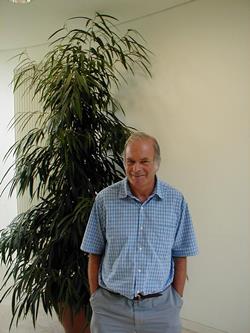 Geologist and science writer Nina Morgan relishes some 19th Century geological rhetoric in rhyme.
Geologist and science writer Nina Morgan relishes some 19th Century geological rhetoric in rhyme.
In 2010, Bryan Lovell, President of the Geological Society 2010 – 2012 (picture), suggested bringing together scientists and poets to explore the links between their disciplines and to celebrate poetry and geology. This inspiring event took place on 10 October 2011 – and earned a permanent place on the Society website, where the poems can still be viewed (W: www.geolsoc.org.uk/geopoetry)
As Lovell himself would be the first to observe, links between geology and poetry are nothing new. But even so, the idea that hard-core geologists in the 19th Century might want to rush to a bookshop to snap up the latest volumes of verse was considered a strange one.
Open mind
An anonymous reviewer writing in the February 1872 issue of the Geological Magazine urged his readers to keep an open mind on seeing a review of a book of poetry in this serious scientific magazine. But he assured them that the book in question, Gaudeamus! Humorous Poems by popular German poet, Joseph Victor von Scheffel [1826 – 1886] translated from the German of by the American humourist, writer, and folklorist Charles Godfrey Leland [1824 – 1903], was an essential addition to every geologist's field kit.
"The English edition being small" the reviewer advised, "it can conveniently be put into every geologist's pocket or knapsack. Then, when the way proves long, and the load of rocks or fossils wearisome, he will find it is good to sit down on the first convenient seat by the wayside, and having taken out his pipe and his Gaudeamus, he will follow Mr [sic] Leland's directions, and say to his companion if he have one – or to himself if he have none – 'Let us be jolly'."
In addition, the Geol. Mag. reviewer notes, the book's geological content is also very relevant.
"...these ballads... form in their connexion a droll history of the world and of humanity – advancing from the early outburst of Granite and Basalt, through the boulder of Gneiss to the Ichthyosaurus and Megatherium."
The poems were written in response to a course of lectures on geology delivered in Heidelberg by Pastor Schmezer. Scheffel regularly attended these lectures, and, as the translator Leland reports:
"the latter was certain to find as regularly on the following morning of his lecture a poetical resume of it on his desk, in the form of a humorous poem." Scheffel's take on Ichthyosaurus is a typical example:
The rushes are strangely rustling,
The ocean uncannily gleams,
As with tears in his eyes down gushing,
An Ichthyosaurus swims.
He bewails the frightful corruption
Of his age, for an awful tone
Has lately been noticed by many
In the Lias formation shown.
The Plesiosaurus, the elder,
Goes roaring about on a spree;
The Plerodactylus even
Comes flying as drunk as can be.
The Iguanodon, the blackguard,
Deserves to be publicly hissed,
Since he lately in open daylight
The Ichthyosaura kissed.
The end of the world is coming,
Things can't go on long in this way;
The Lias formation can't stand it,
Is all that I've got to say!
So the Ichthyosaur went walking
His chalks in an angry mood;
The last of his sighs extinguished
In the roar and the rush of the flood.
And all of the piggish Saurians
Died, too, on that dreadful day;
There were too many chalks against them,
And of course they'd the devil to pay.
And this petrifideal ditty?
Who was it this song did write?
'Twas found as a fossil album leaf
Upon a coprolite.
But 'education' aside, Leland suggests that Gaudeamus is all the more notable because Scheffel "manifests a remarkable insight into the inner real life of the past."
With such verses as:
In stocks I would gladly grow wealthy
But exchange is not yet understood:
A good glass of beer would be healthy,
But never a drop has been brewed.
Leland might also have claimed that Scheffel also showed remarkable insight into the real life of the present. Some things never change!
Acknowledgements
Sources for this vignette include: An anonymous book review that appears on pages 85 – 86 of the February 1872 issue of Geological Magazine; the full text of Gaudeamus available from W: www.gutenburg.org; the Wikipedia entries for Charles Godfrey Leland and Joseph Victor von Scheffel; and the article Poetry Day 2011 by Bryan Lovell available on our website.
* Nina Morgan is a geologist and science writer based near Oxford. Her latest book, The Geology of Oxford Gravestones, is available via the Gravestone Geology website.